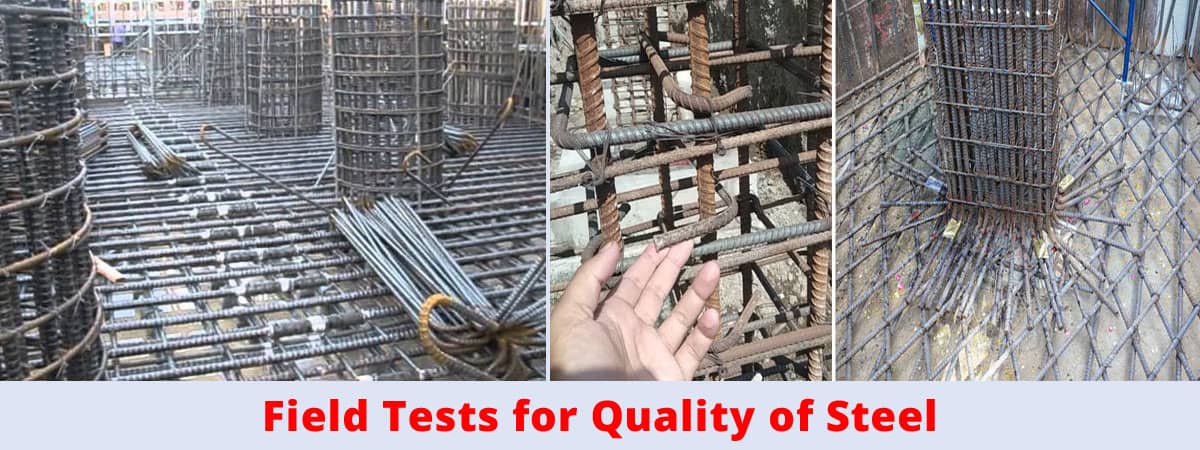Field Tests for Quality of Steel

It is essential for the constructors to have good quality material for their building project. Compromises in the quality of construction material can cause severe results leading to serious repercussions. One of the most important materials of a building is the steel reinforcements used in concrete columns, beams, and other structures.
The quality of steel received on site determines the strength of the structure with steel reinforcements inside it; so it is imperative that you check the steel quality right on the project site to ensure that your building will be made out of materials capable of handling the load.
Observations on Steel on Site:
Cleanliness
The reinforcements that you receive in the field must be clean ones. Dust, rust, earth, mild scales, paint, oil, grease or any similar coating clinging to the bars is detrimental to the bonding between reinforcement and concrete. Also, these contaminants can cause corrosion in the structure. For this reason, you must make sure that the steel bars and other reinforcements you receive are clean. Point to note: a little rusting on the bars is considered to be helpful in forming better bonds with the concrete. But excessive rusting and/or scaling is absolutely harmful for the building.
Manufacturer Marking
The bars should have their steel grade, manufacturer name/logo, brand name, diameter etc should be embossed on themselves. Do check if you have received everything of the same type as you expected.
Bending the Bars
When satisfied with the above, proceed to the Bend Test to examine the actual capabilities of the steel you have received on site, under realistic strain.
Bend Test: This test should be carried out as per the specifications in IS 1599 and you should use mandrels of size specified in IS 1786. The rebar sample should be bent in 180 degrees, results recorded, and then proceed to bending it 180 degrees.
Structure Relocation Procedure
After the bending, minutely observe (with a magnifying glass, if needed) the surface of the bar on the opposite side of the bend, that is, the side that got elongated due to strain. If you see any cracks or ruptures, the steel is of bad quality and replacements may be needed.
Rebend Test: The next step is the Rebend test. In this, the bar is first bent 135 degrees. Then it is put into boiling water for 30 minutes, then it is further bent to 157.5 degrees. After this, observe the stretched side again for cracks or ruptures. If the reinforcement bar passes both tests, you can say it has good steel quality.
Checks in the Reinforcements
- Count, verify and check the main and secondary reinforcement bars to make sure they conform to specifications of steel schedule and the drawings.
- Measure and weigh sections of the bars to make sure they are in accordance with the specifications and schedules. You should use 1 meter samples from random bundles, with a minimum of 4 samples each for length and weight measurement. Good quality steel should identify with the specifications given in IS 1786.
- The tensile strength and bending strength of the steel reinforcements should comply with the specifications given.
- Check whether the main and secondary bars are securely tied up together. The binding should be very rigid. There shouldn't be any scrap bars in bundle either.
- In order to keep the tie wires inside the concrete, they should be closely cut and be tight.
- The steel reinforcement bars need to be free of rust, grease, scaling, soil etc. If some are coated by some contaminant, you may have to consider anti-corrosive treatment.
- Measure the lapping length of the steel. If this is inadequate, you may need to use additional bars to ensure proper bonding.
- The specifications should match with the spacing between the reinforcements.
